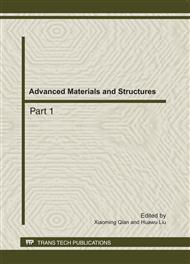p.650
p.655
p.659
p.665
p.669
p.674
p.678
p.683
p.688
Synthesis and Luminescent Behavior of Mn(1-X)S:AX/ZnS Core/Shell Nanocrystals
Abstract:
Mn(1-X)S:AX/ZnS (A: Er, Dy) nanocrystals were synthesized by chemical precipitation method. X-ray diffraction analysis show that Mn(1-X)S:AX/ZnS nanocrystals were zincblende structure. The high-resolution transmission electron microscope images indicated that Mn(1-X)S:AX/ZnS nanocrystals show a spherical shape, and their average grain size is about 4 nm. Photoluminescence spectra of Mn(1-X)S:AX/ZnS nanocrystals revealed that there existed several major emission bands, ~417 nm, ~509 nm, ~580 nm, ~617nm and ~680 nm. Mn(1-X)S:AX/ZnS nanocrystals exhibited enhanced luminescence properties compared with the pure Mn(1-X)S:AX nanocrystals. The enhanced photoluminescence properties of Mn(1-X)S:AX/ZnS nanocrystals should be attributed to the effective suppression of nonradiative recombination by the surface-passivation layer.
Info:
Periodical:
Pages:
669-673
Citation:
Online since:
September 2011
Authors:
Price:
Сopyright:
© 2011 Trans Tech Publications Ltd. All Rights Reserved
Share:
Citation:


